Himlayan Contemporary: Youdhisthir Maharjan, Ang Tsherin Sherpa, Dinesh Charan Shrestha
November 2017–February 2018
Desai | Matta Gallery
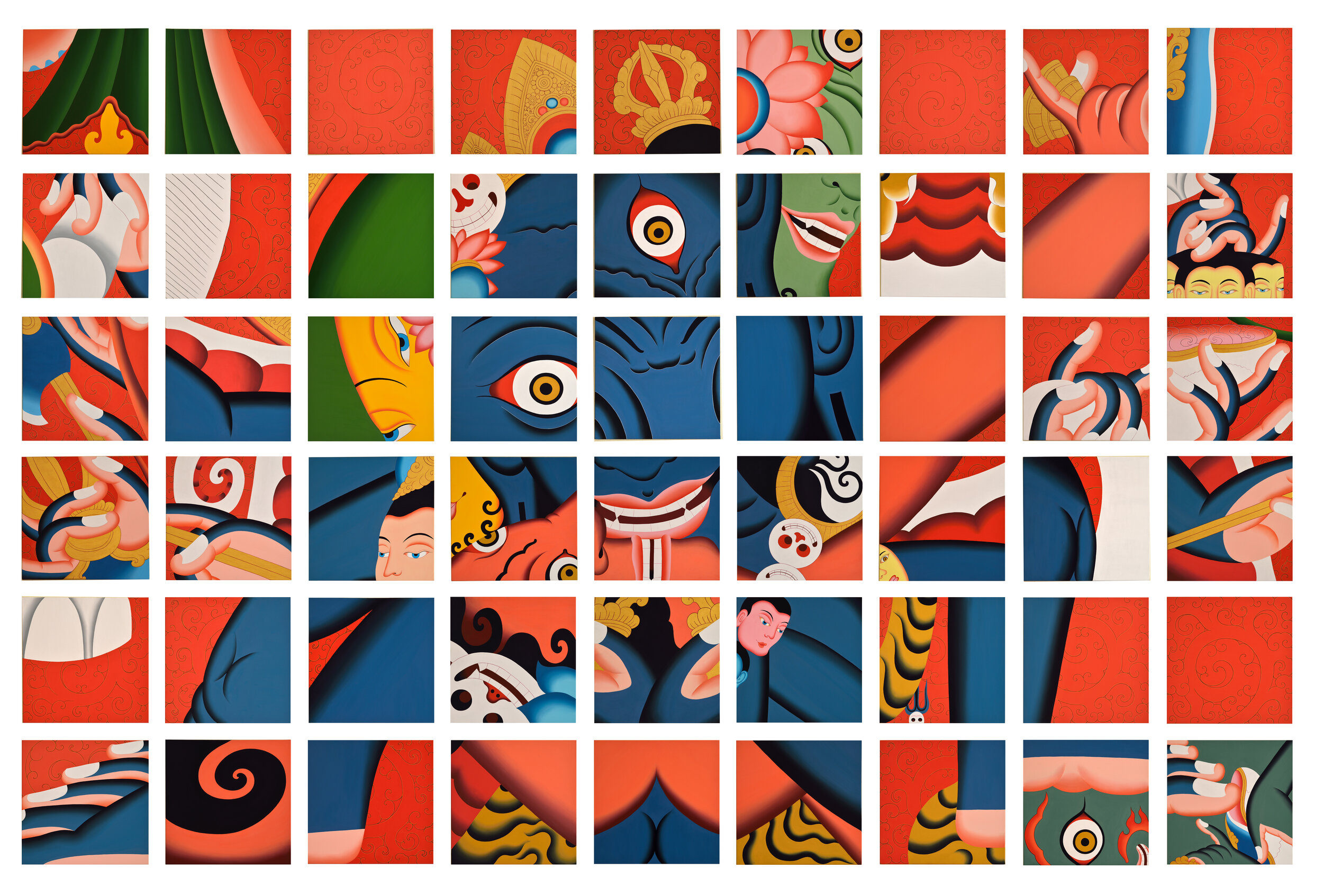
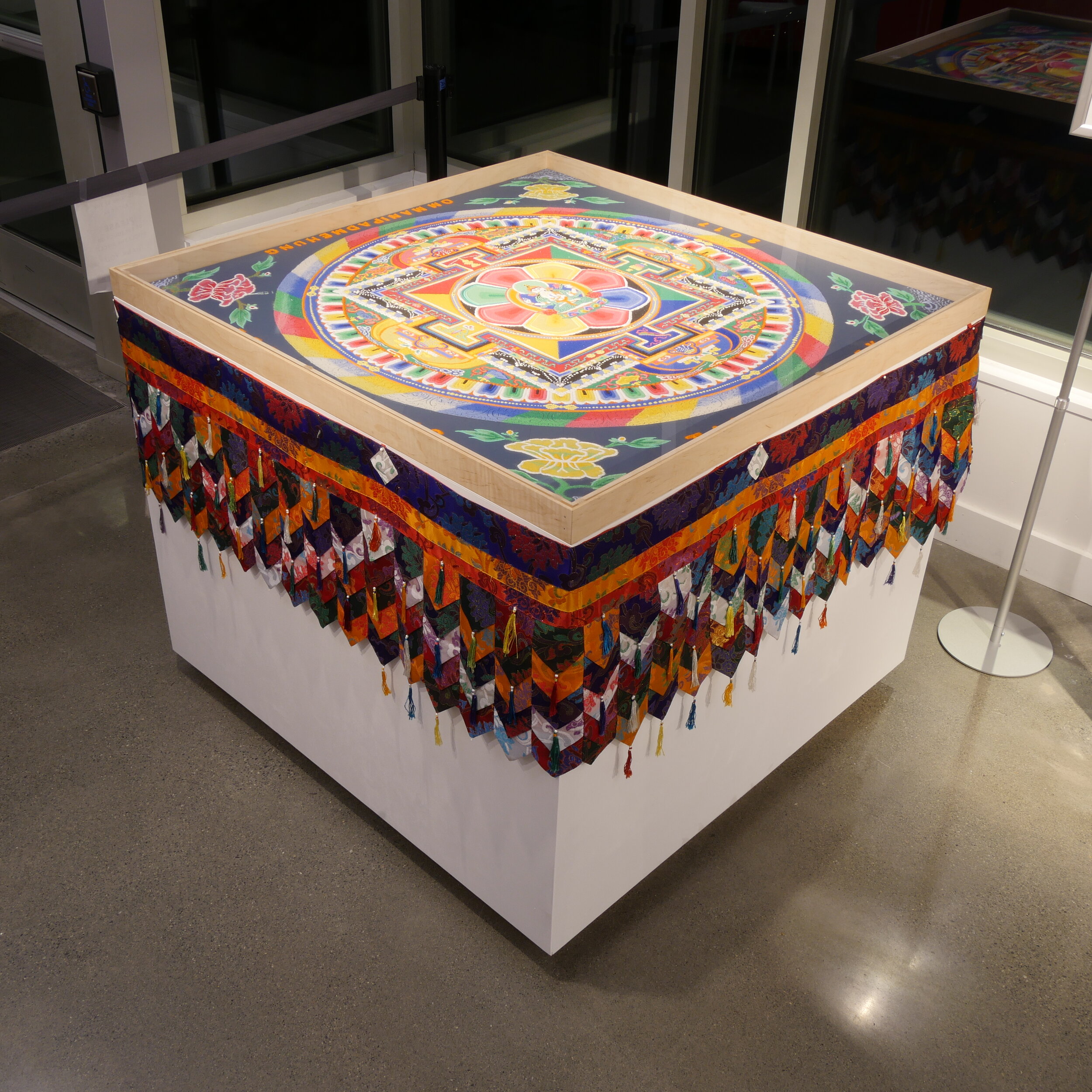
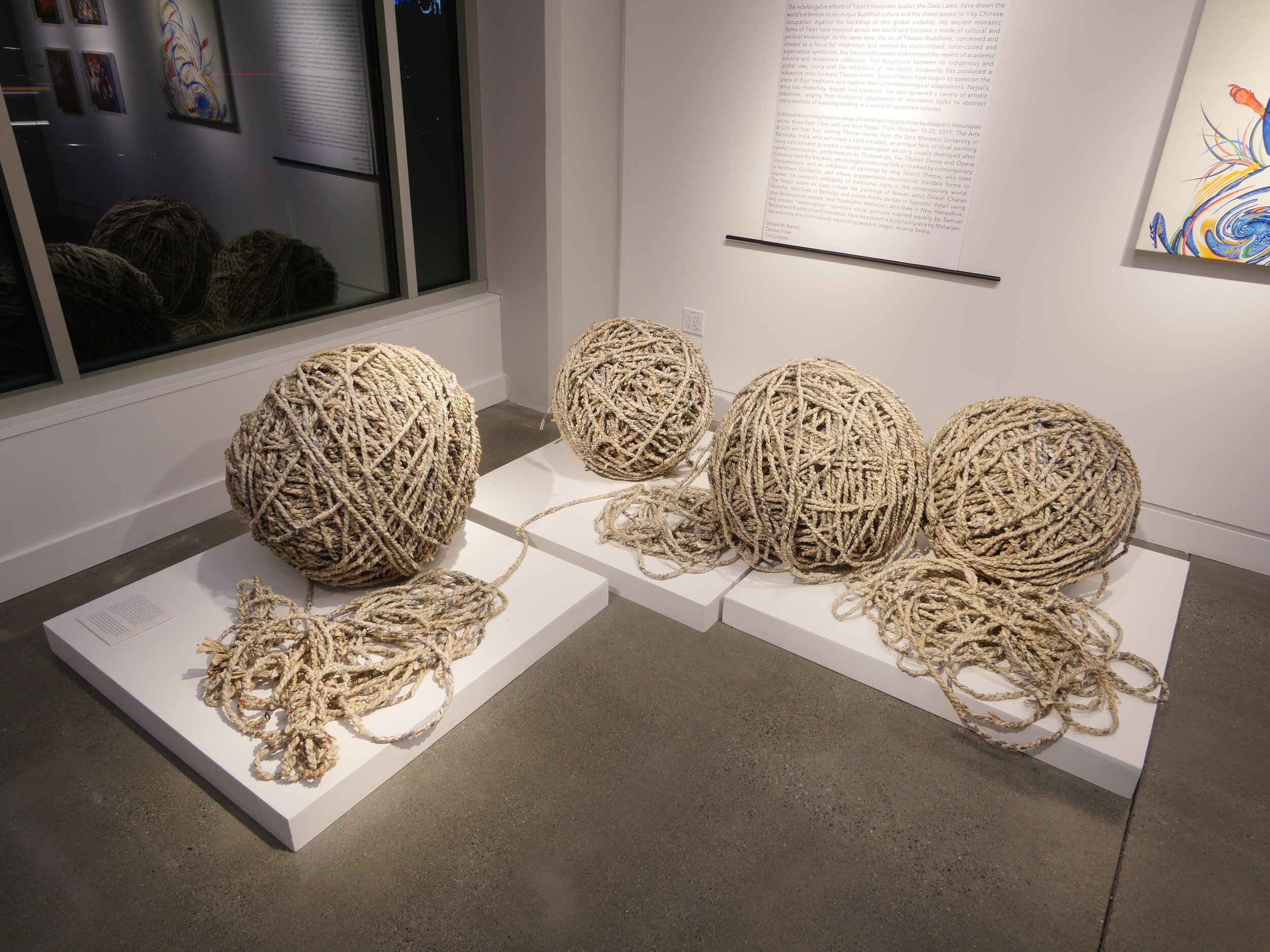
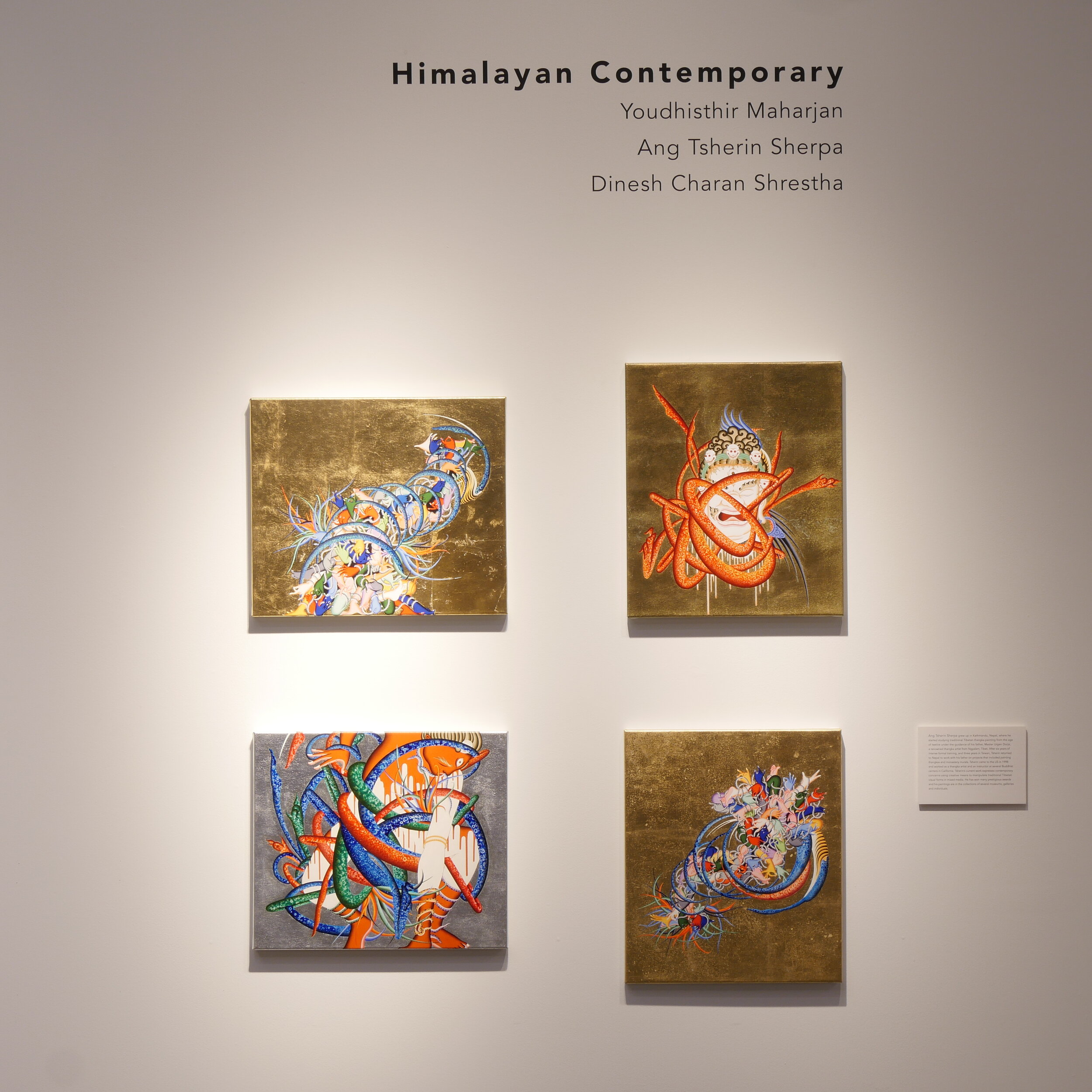
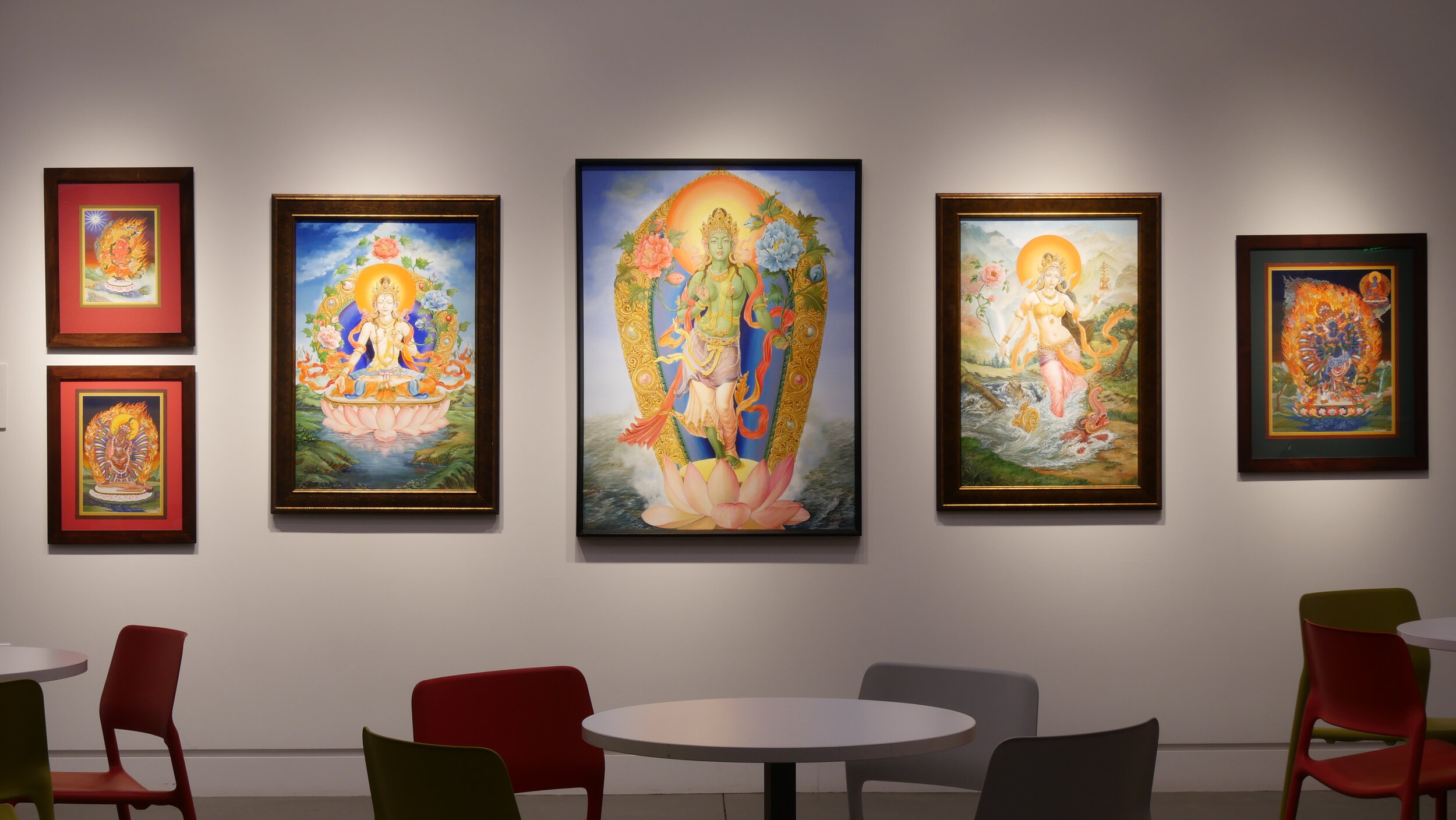

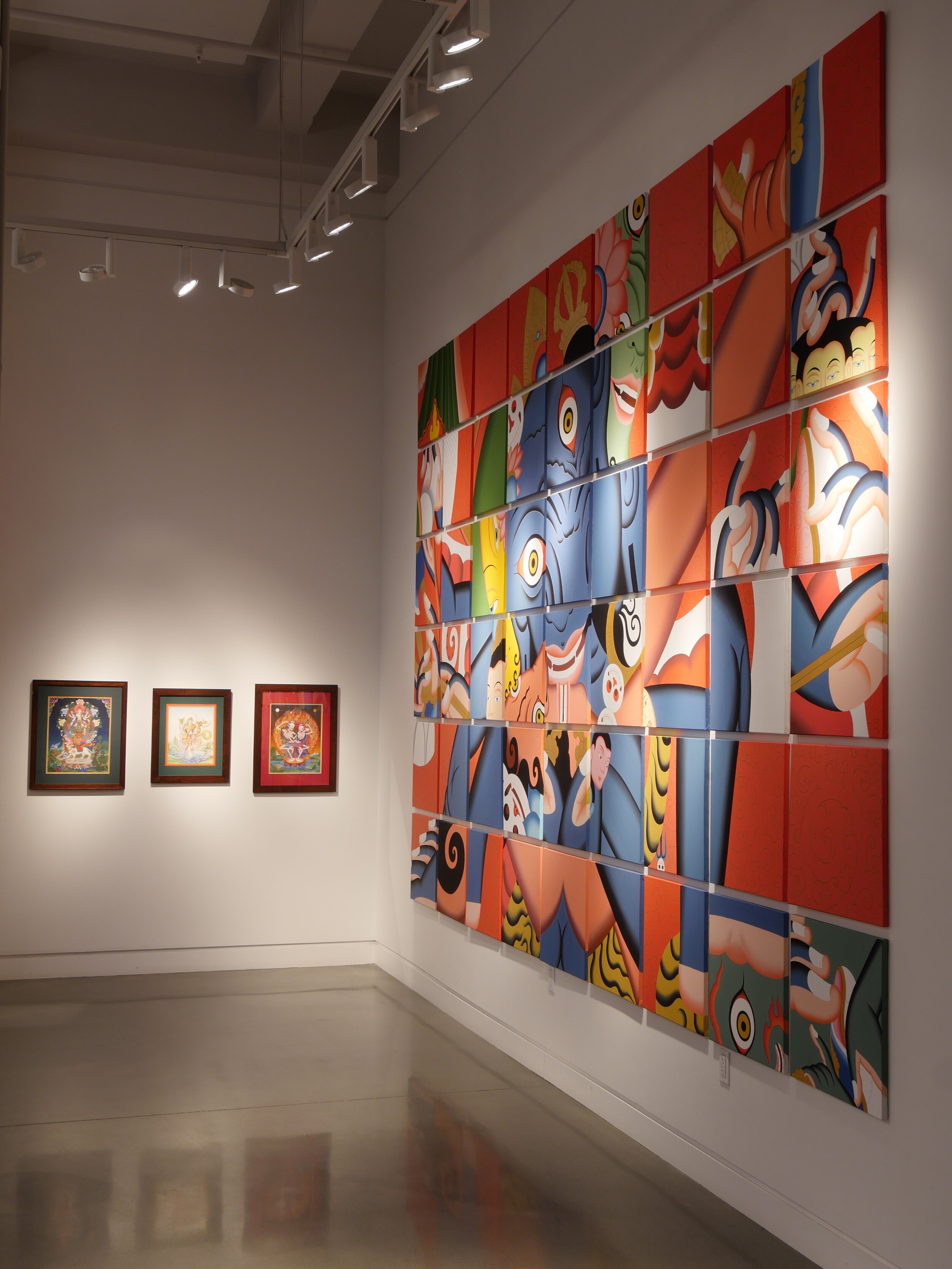

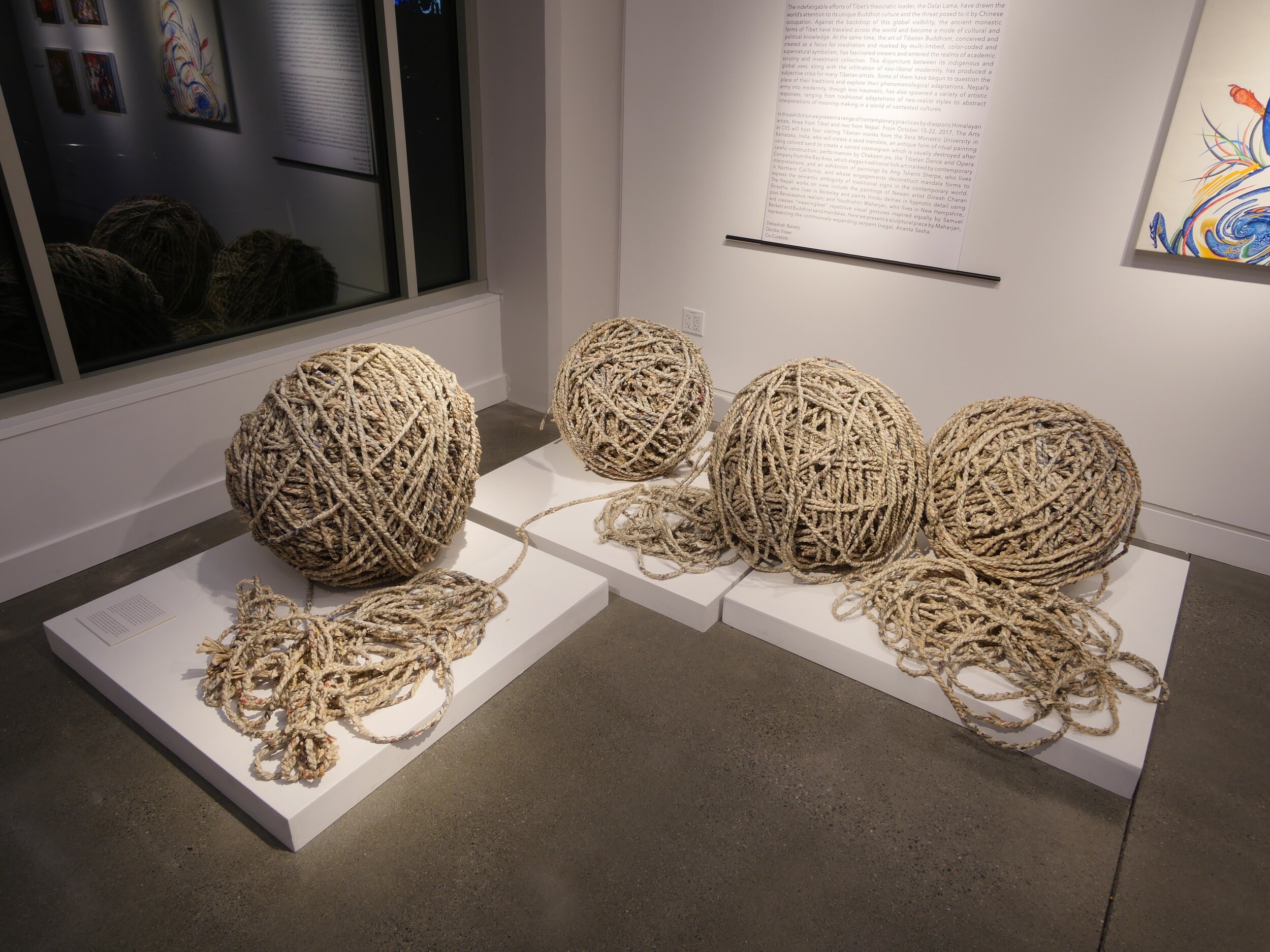
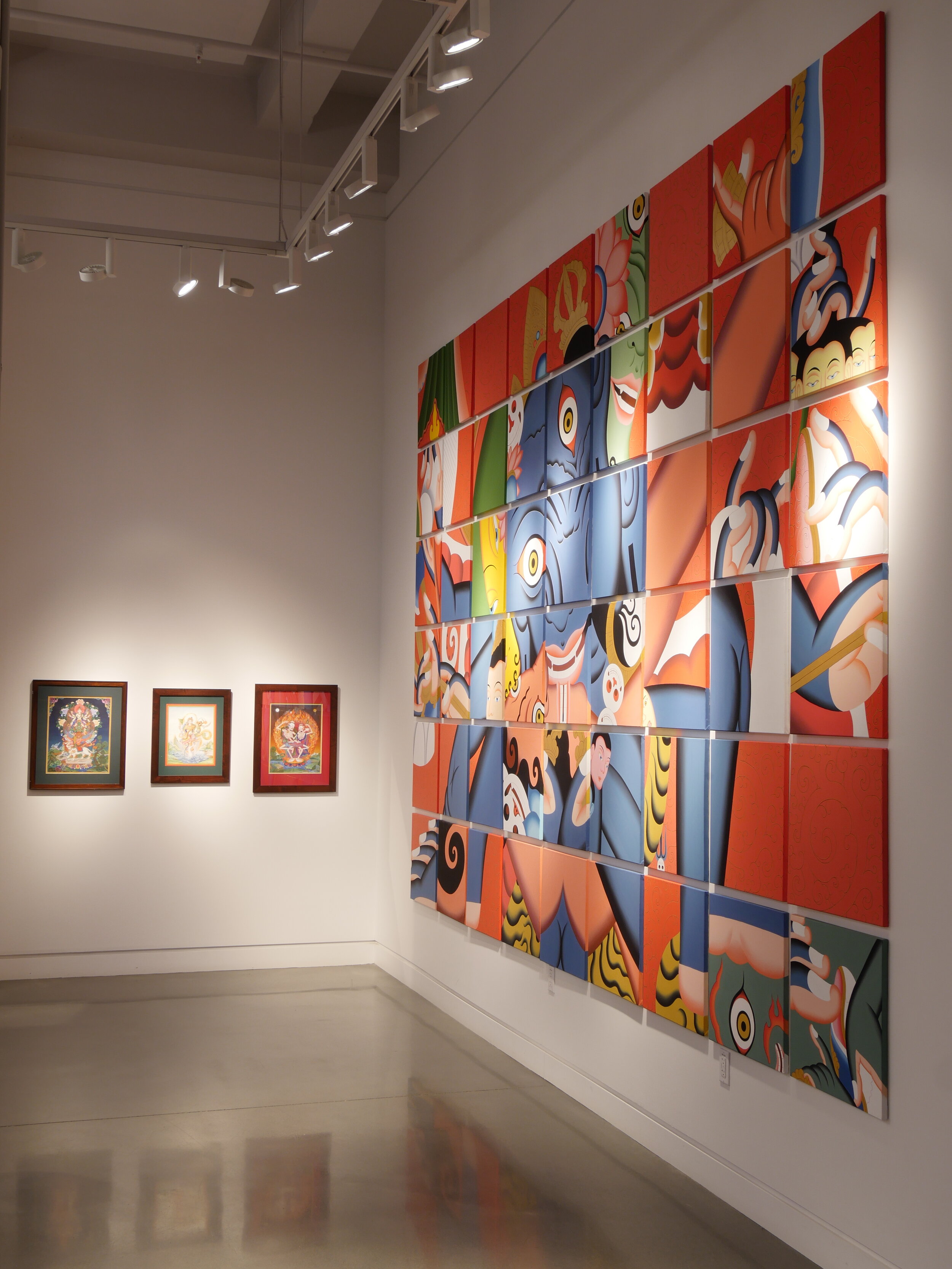
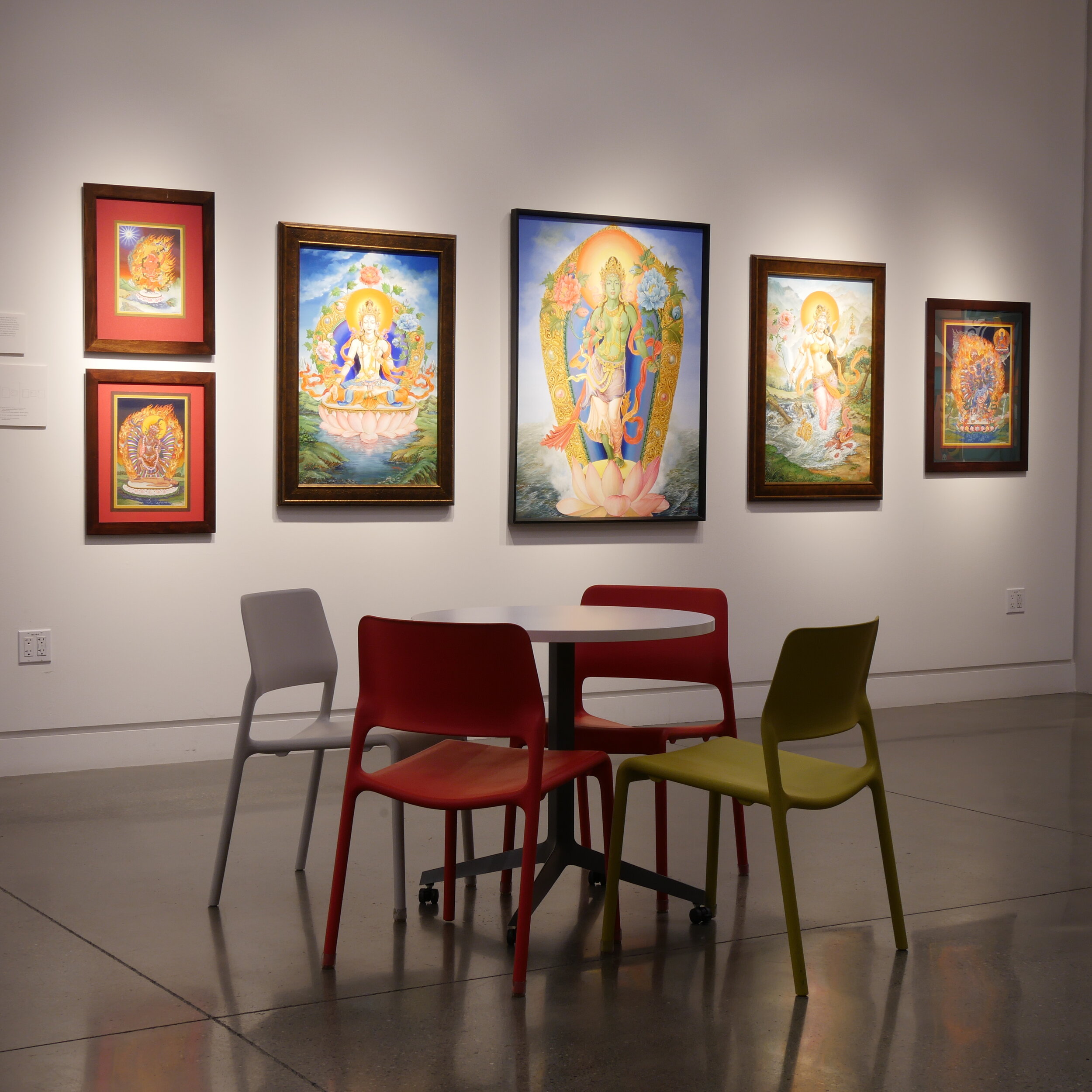

Nepal and Tibet are located in the Himalayan region, situated at the northern extremity of the Indian subcontinent. This region—often referred to as the “roof of the world”—has traditionally been considered a domain where time stands still. However the Himalayas, as all other places on earth, are undergoing rapid political and cultural change in our Anthropocene age. This change is marked by different forms of contemporary agency, ranging from durational to momentary, and from present-day to deeply historic ways of engaging both the global and the local. Himalayan Contemporary explores the plural, co-existing timescapes that comprise the present for these two states.
The indefatigable efforts of Tibet’s theocratic leader, the Dalai Lama, have drawn the world’s attention to its unique Buddhist culture and the threat posed to it by Chinese occupation. Against the backdrop of this global visibility, the ancient monastic forms of Tibet have traveled across the world and become a mode of cultural and political knowledge. At the same time, the art of Tibetan Buddhism, conceived and created as a focus for meditation and marked by multi-limbed, color-coded and supernatural symbolism, has fascinated viewers and entered the realms of academic scrutiny and investment collection. This disjuncture between its indigenous and global uses, along with the infiltration of neo-liberal modernity, has produced a subjective crisis for many Tibetan artists. Some of them have begun to question the place of their traditions and explore their phenomenological adaptations. Nepal’s entry into modernity, though less traumatic, has also spawned a variety of artistic responses, ranging from traditional adaptations of neo-realist styles to abstract interpretations of meaning-making in a world of contested cultures.
In this exhibition we present a range of contemporary practices by diasporic Himalayan artists, three from Tibet and two from Nepal. From October 15-22, 2017, The Arts at CIIS will host four visiting Tibetan monks from the Sera Monastic University in Karnataka, India, who will create a sand mandala, an antique form of ritual painting using colored sand to create a sacred cosmogram which is usually destroyed after careful construction; performances by Chaksam-pa, the Tibetan Dance and Opera Company from the Bay Area, which stages traditional folk art marked by contemporary interpretations; and an exhibition of paintings by Ang Tsherin Sherpa, who lives in Northern California, and whose engagements deconstruct mandala forms to express the semantic ambiguity of traditional signs in the contemporary world. The Nepali works on view include the paintings of Newari artist Dinesh Charan Shrestha, who lives in Berkeley and paints Hindu deities in hypnotic detail using post-Renaissance realism; and Youdhishtir Maharjan, who lives in New Hampshire, and creates “meaningless” repetitive visual gestures inspired equally by Samuel Beckett and Buddhist sand mandalas. Here we present a sculptural piece by Maharjan, representing the continuously expanding serpent (naga), Ananta Sesha.
Debashish Banerji
Deirdre Visser
Co-Curators